Introduction
Technical documentation serves as a vital resource for software development projects, providing a comprehensive understanding of a product's design and functionality. However, the process of creating and maintaining documentation can be complex and time-consuming. That's where collaborative documentation comes in.
By harnessing the collective expertise of various stakeholders, collaborative documentation not only enhances the quality of the documentation but also promotes efficiency and instills a sense of collective ownership among team members. This article explores the benefits of collaborative documentation, the importance of choosing the right documentation collaboration tool, setting the foundation for collaboration, case studies showcasing its implementation in mental health care, best practices for effective collaborative documentation, tools available for collaborative documentation, legal and compliance considerations, client engagement and involvement, as well as the challenges and solutions in collaborative documentation. Through these insights, organizations can optimize their documentation workflows, foster teamwork, and achieve maximum efficiency and productivity.
Benefits of Collaborative Documentation
Technical documentation transcends mere record-keeping; it's a dynamic, collaborative endeavor that brings together various experts to create a document that is not only precise and current but also all-encompassing. This collective approach taps into the diverse expertise of contributors, ensuring that the final product is an accurate reflection of the software's design and functionality. The synergy of shared knowledge not only enhances the quality of the documentation but also promotes efficiency and instills a sense of collective ownership among team members.
Consider the case of the Ford Foundation, which faced challenges in keeping its content production up-to-date with evolving audience needs. With the adoption of a new content management system, the workflow modernized, accommodating more frequent and varied content contributions. Similarly, Summer Health experienced a transformation in producing medical visit notes.
By streamlining administrative processes, pediatricians could invest more time in patient care, reducing burnout and increasing job satisfaction.
Moreover, a study featured in Texas McCombs highlighted the quantifiable benefits of collaborative care in hospitals, showing reduced patient stays and enhanced outcomes, thanks to the collective expertise of a unified team. In the technology space, De Montfort University showcased how limited resources need not hinder the support for open data sharing, by creating a thriving research data management community with innovative, resource-conscious initiatives.
These examples underscore the pivotal role that well-structured, collaborative documentation plays in enhancing operational efficiency and fostering a culture of teamwork. As software documentation serves as the bedrock of any development project, the process of creating and maintaining it should be accorded the importance it deserves, ensuring that every stakeholder has a clear understanding of the software's purpose and functionalities.
Choosing the Right Documentation Collaboration Tool
The pivotal role of choosing an effective documentation collaboration tool cannot be overstated. Such a tool should not only be user-friendly and integrate seamlessly with existing platforms but also furnish robust features that facilitate cooperative editing, version tracking, and comprehensive document management. Optimal selection of this tool is the linchpin for optimizing documentation workflows and fostering synergistic interactions among team members.
The importance of this is highlighted by the fact that many design tools still struggle with basic accessibility, often inhibiting users who rely on screen readers. Hence, when selecting a tool, it's crucial to ensure it supports accessibility standards, such as those outlined by WCAG, including text alternatives, contrast ratios, and text spacing. A case in point is the Customer Technology team at Chick-fil-A, which overcame a significant API Contract problem by improving documentation clarity and team collaboration.
Furthermore, the increasing need for open data sharing underscores the value of efficient documentation tools, as seen in how Figshare for Institutions has enabled organizations like De Montfort University to enhance research data management with minimal resources. Such advancements in documentation tools are echoed in the healthcare sector, with Advocate Health's commitment to clinical excellence being facilitated by effective data management and documentation practices. The advent of AI-powered tools like Zoom Docs further revolutionizes the documentation landscape, promising a new era of collaboration with features that integrate seamlessly into team workflows.
Overall, careful consideration of these factors will ensure that teams are well-equipped to handle their documentation needs, thus maintaining project coherence and effectiveness.
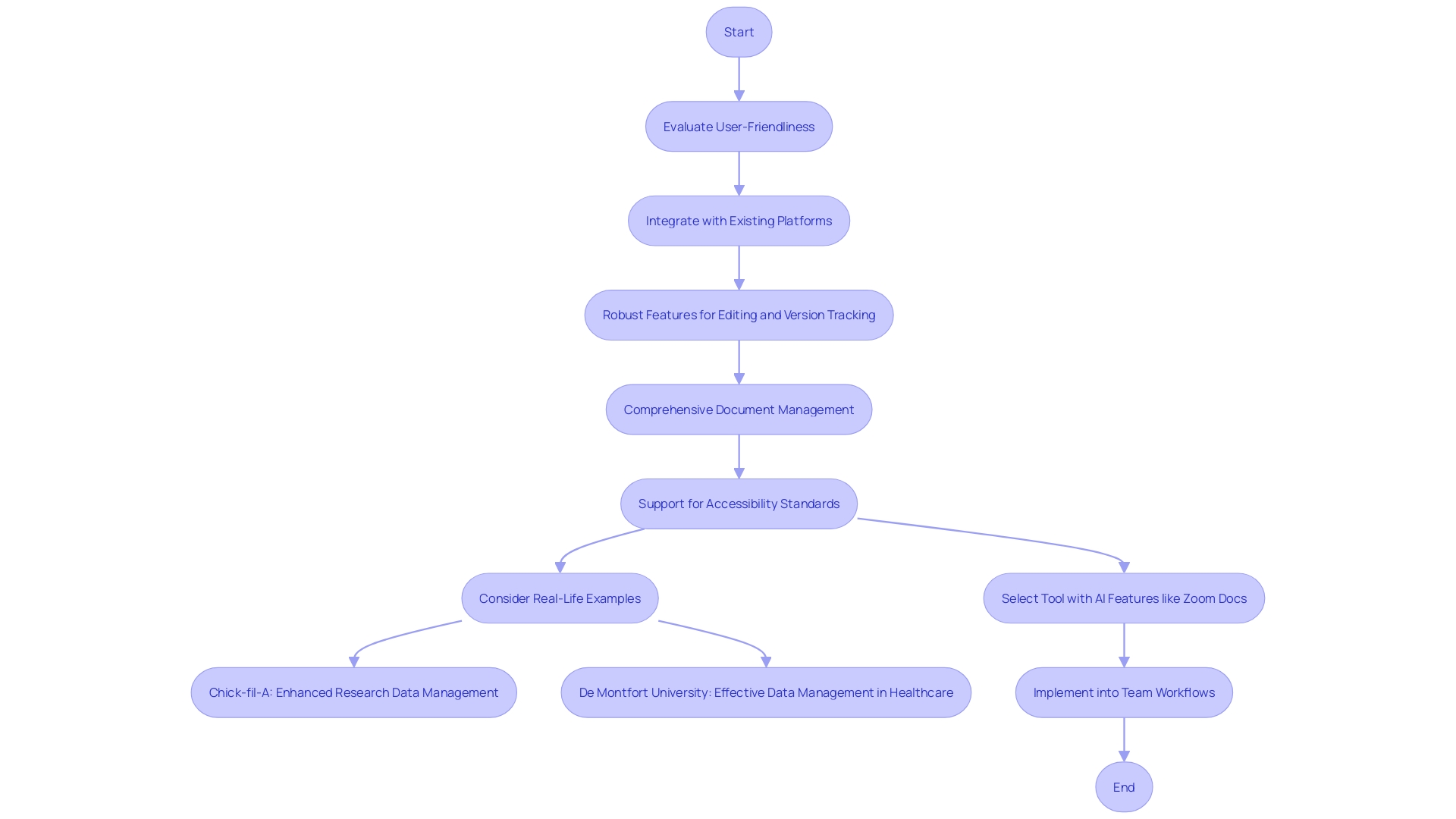
Setting the Foundation for Collaboration
To ensure a seamless collaborative documentation effort, it's paramount to define clear roles and delineate responsibilities for all parties involved. This necessitates the establishment of a structured framework, such as the Credit taxonomy, which specifies 14 roles to recognize individual contributions accurately. This approach is echoed in real-world scenarios, such as a project that evolved from a simple platform for creators to a multifaceted business-focused tool.
The project's expansion necessitated a halt in development to craft comprehensible documentation, highlighting the importance of a well-organized start.
Moreover, collaborative ventures like Press Forward and NPR's expansion of collaborative newsrooms showcase the emphasis on clear, shared goals and expectations in successful partnerships. A study by the Center for Cooperative Media supports this, finding that the most fruitful collaborations shared impact goals and values.
Software documentation, the cornerstone of software development, is a beacon guiding the way through the complexities of the project. It's a detailed exposition of the software's architecture and functionalities, designed to enlighten end-users, administrators, and developers alike. Without this foundation, the project risks descending into chaos, as evidenced by the increased challenges faced when documentation is absent or unclear.
In fact, seasoned developers advocate for thorough documentation, underscoring its role in aiding comprehension and facilitating a smooth transition for new contributors to the project.
In essence, establishing a robust foundation for collaboration in documentation isn't just beneficial; it's critical. It's about aligning on a shared vision and creating a roadmap that not only guides but also ensures the collective success of all stakeholders involved.
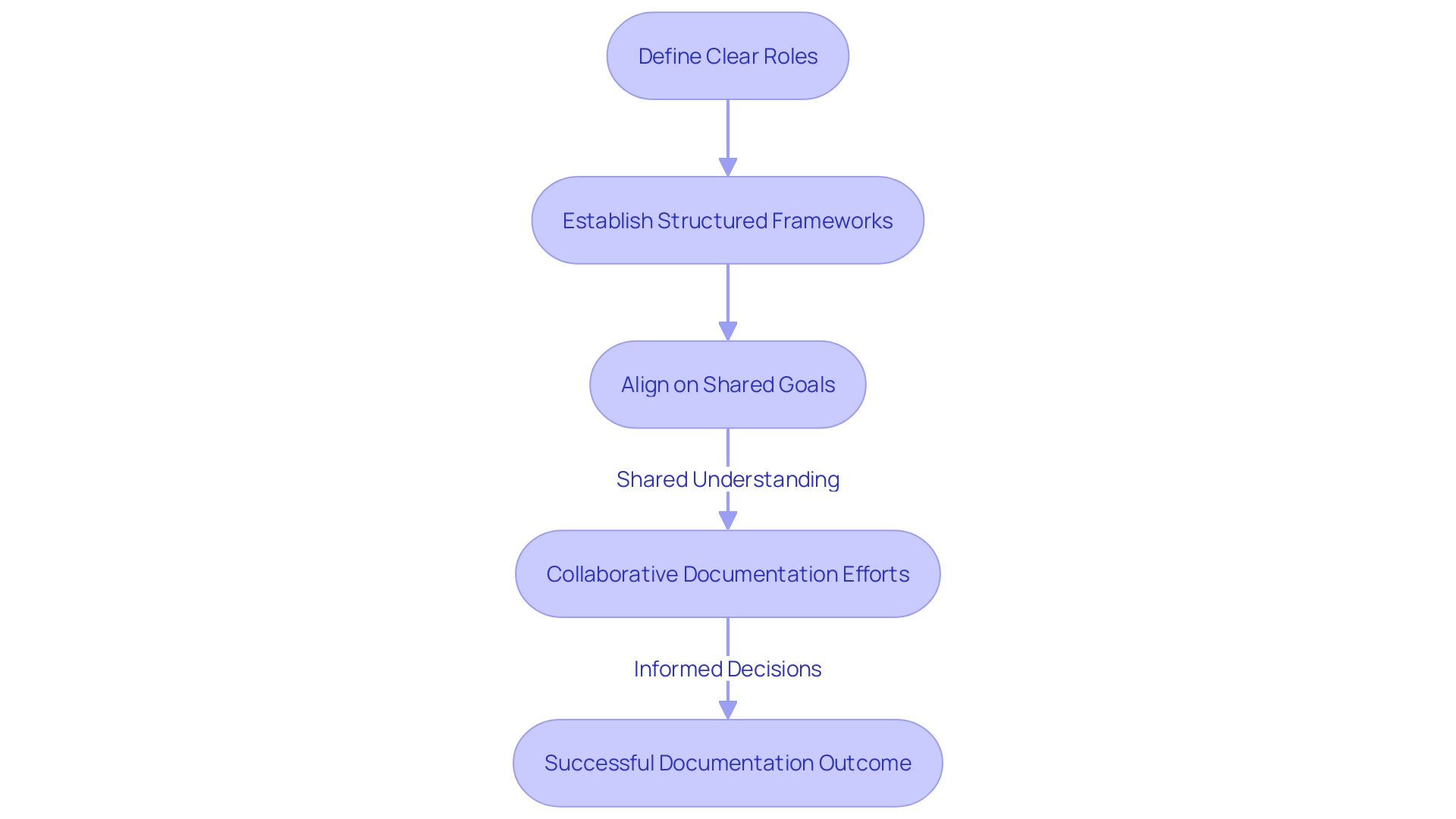
Case Study: Implementing Collaborative Documentation in Mental Health Care
The transformative power of Collaborative Care in mental health treatment has been showcased through several compelling examples, including the pioneering initiative at UW Health. By embedding behavioral health specialists within primary care clinics, the program has enabled a more immediate response to mental health concerns that arise during patient visits. This approach not only facilitates a swift evaluation by the primary care physician but also allows for an immediate consultation with a behavioral health specialist, who can join the session to meet with the patient.
Such integration is indicative of a broader shift in medical practice that seeks to unite a diverse array of specialists under one roof, thereby fostering a more holistic and efficient healthcare environment.
The success of the Collaborative Care model is substantiated by its significant reduction in the time it takes for patients to improve, with the average duration dropping from 614 days in traditional settings to just 86 days. This model is rooted in the principles of population health, emphasizing a value-based approach that prioritizes patient experience and provider support. One of the critical elements of this model is its navigation system, which aids patients, particularly those with co-occurring mental health and other conditions, in finding suitable providers.
The behavioral health care manager plays an instrumental role in this process, ensuring that each patient is connected with an appropriate provider and that their care plan is communicated across the entire healthcare team.
In addition to these structured programs, personal narratives also underscore the impact of collaborative approaches to healthcare. For instance, Sarah Woolf's experience of writing a note to hospital staff illustrates the profound effect that clear communication can have on patient care and recovery. Such individual stories complement the broader data and reinforce the importance of integrating behavioral health into primary care.
The urgency for adopting models like Collaborative Care is highlighted by the significant treatment gap existing within mental health and substance use conditions. Recent statistics reveal a stark reality: 55% of adults with mental illness and 60% of youth with major depression do not receive the necessary treatment. This shortfall is exacerbated by the current shortage of behavioral health providers.
By implementing BHI into primary care settings, there is potential to bridge this gap and deliver continuous, person-centered care.
Moreover, the effective implementation of electronic health records allows for seamless coordination among healthcare providers, ensuring that each professional involved in a patient's care is informed and engaged through a unified platform. This level of integration is essential for managing chronic health conditions and addressing social determinants of health that may require collaboration with social services.
The evolution of healthcare towards more integrated models like Collaborative Care represents a promising direction for the future of mental health treatment, offering a beacon of hope for those affected by mental illness and the professionals dedicated to their care.
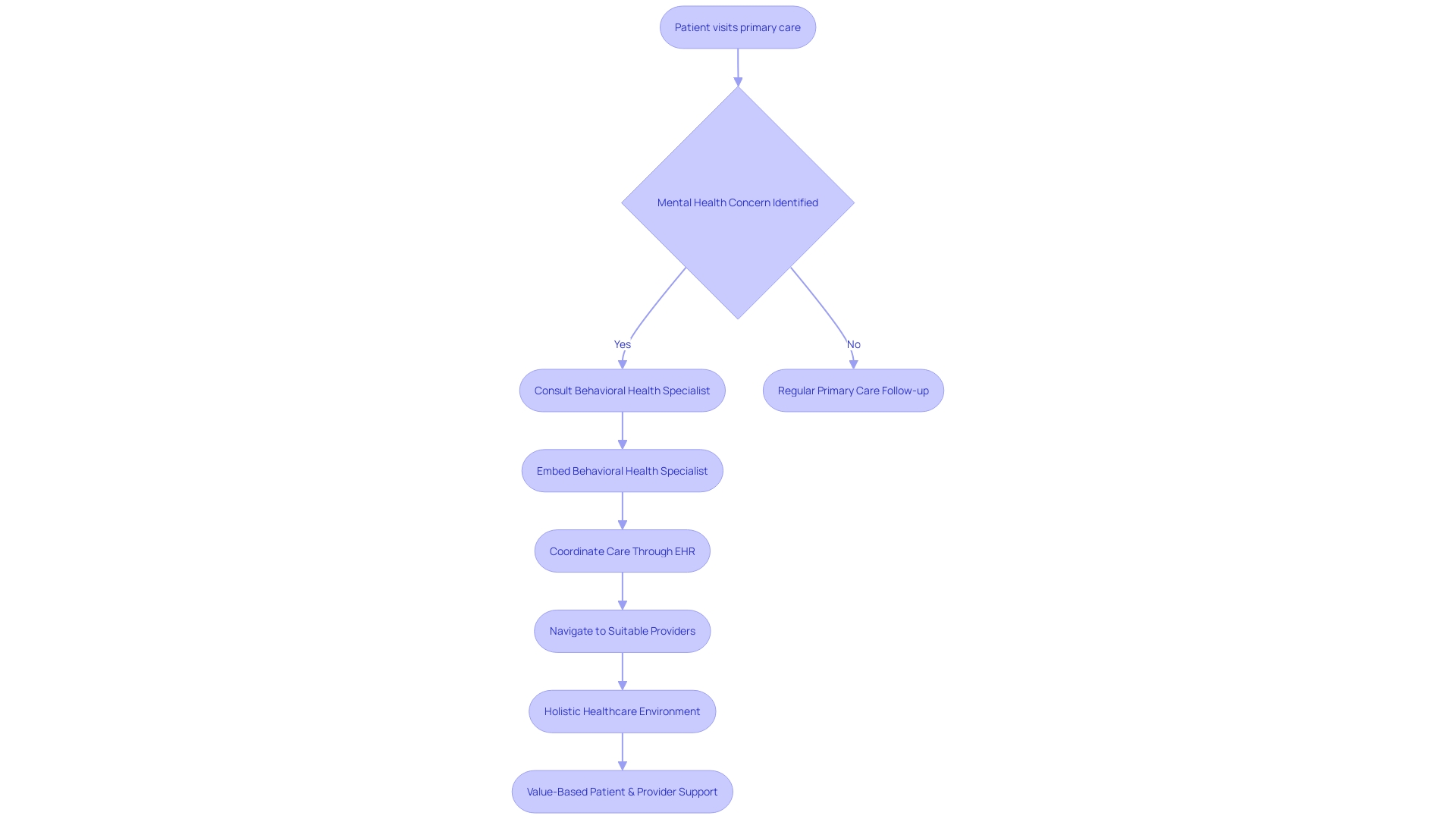
Best Practices for Effective Collaborative Documentation
Collaborative documentation is a cornerstone of modern technical projects, requiring a harmonious blend of expertise and communication. To elevate the process, consider the inception of a documentation platform originally designed for map-based creator experiences. As the platform expanded, catering to events and businesses with an ever-growing feature set, the need for clear, accessible documentation became paramount.
The team's strategic pause in development to craft user-friendly guides for developers and administrators exemplifies a commitment to documentation clarity, serving as a beacon for others to follow.
Emphasizing the value of documentation maintenance, the practice of cultivating a documentation-friendly culture cannot be overstated. In large-scale international scientific collaborations, the meticulous documentation of hardware technology—deemed instrument science—has proven vital. It ensures that the fruits of taxpayer-funded research, costing billions and engaging thousands of scientists, are comprehensively recorded and openly accessible.
The digital realm also demands attention to document accessibility. Plain language usage, as highlighted by digital services manager Iris Amelia O'Connor, is essential to ensure that all users, regardless of educational background or disabilities, can comprehend the content. This principle is underpinned by the sobering statistic that one in five U.S. adults reads at or below a fifth-grade level.
Accessibility extends beyond the written word; it is about inclusivity in the broadest sense.
Furthermore, the dynamic nature of security advice for journalists, shared by the Freedom of the Press Foundation, illustrates the necessity for context-sensitive, evolving documentation. It must be tailored to meet the needs of its audience while remaining cogent for future readers.
In essence, successful collaborative documentation hinges on establishing guiding principles that encourage documentation maintenance, foster inclusivity, and prioritize accessibility. It's a multifaceted endeavor that demands ongoing vigilance and adaptation to meet the needs of all stakeholders involved.
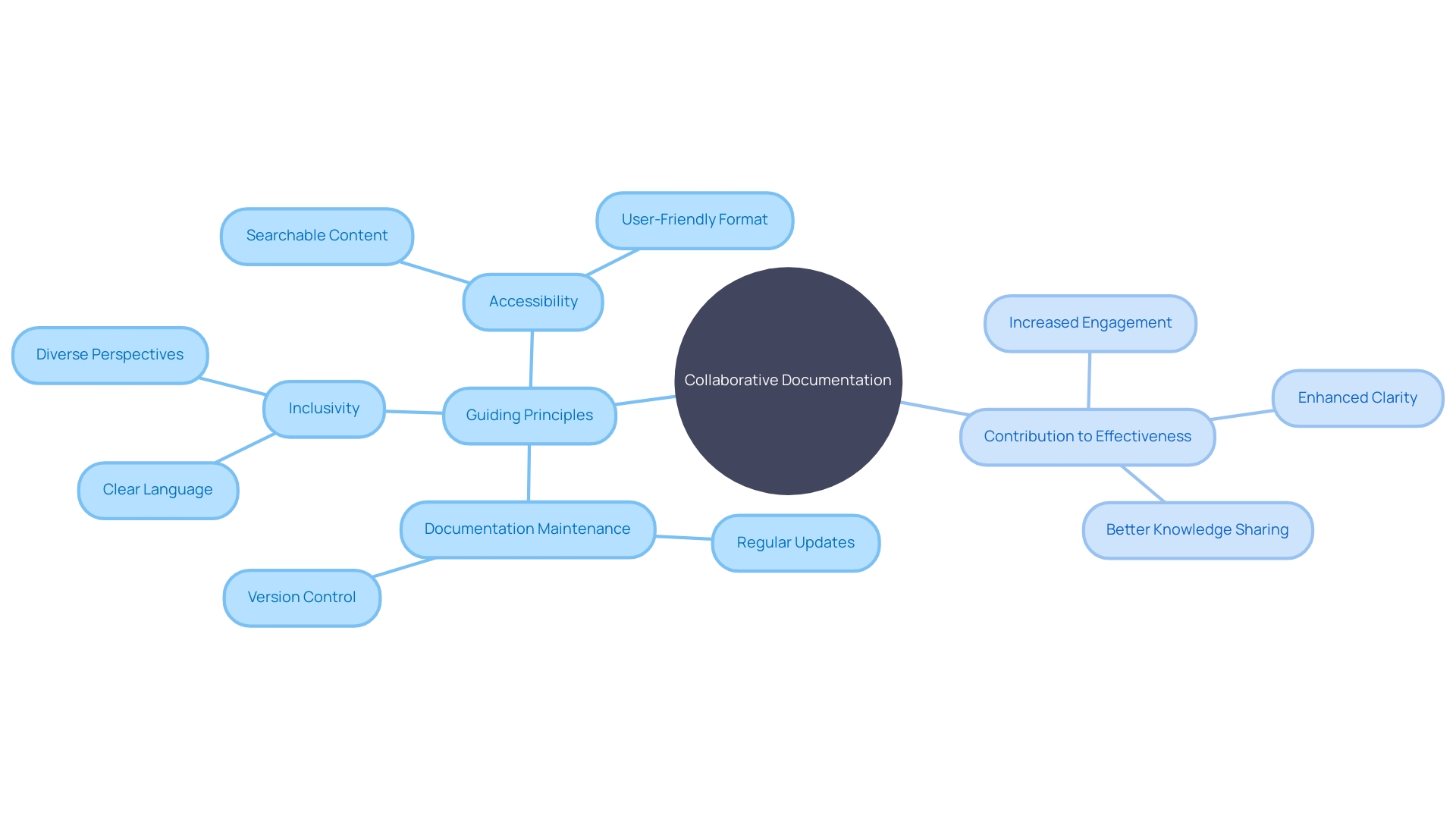
Tools for Collaborative Documentation
Revolutionizing the landscape of technical documentation, the emergence of collaborative tools has significantly enhanced the way teams interact with and manage information. These platforms are not just about sharing documents; they embody a transformation in how knowledge is curated and accessed. For instance, commenting systems allow for seamless audio or chat communication, centralizing discussions within the file itself.
This fosters an environment where feedback is easily gathered and integrated, ensuring that every team member is on the same page—quite literally.
As we delve into the capabilities of tools like Figma and Hulu, we see that they offer more than just text editing; they provide a suite of features to supercharge team efficiency. Real-time collaboration empowers remote teams to work conjointly, while the ability to tag users, link to issues, and assign action items within the document editor streamlines workflow. Moreover, documents are not static entities; they can be enhanced with rich text formatting, images, attachments, and even code blocks, making them dynamic repositories of a project's lifeblood.
The significance of these tools is echoed in the words of a seasoned developer, "I write these docs for myself. After a few weeks of not working on a project, I always forget things." This personal testament highlights the intrinsic value of well-crafted documentation—it serves as a memory extension, a reference point, and a guide through the intricacies of complex systems.
The developer further elucidates the importance of documenting system architecture, service interactions, and key project references, which become indispensable during critical situations, such as troubleshooting at 3 AM.
In the broader context, the role of these documentation tools extends to monumental collaborative efforts in science and technology. Large-scale international projects, often funded by taxpayers, necessitate impeccably documented hardware and software to ensure transparency and accessibility. This is where collaborative documentation platforms shine, enabling thousands of scientists to work in unison, despite geographical and temporal barriers.
Recent advancements, such as Zoom's introduction of Zoom Docs, have set a new benchmark by integrating AI capabilities that revolutionize project management and organization. With the ability to create, edit, and summarize content, the platform is designed to adapt to the evolving needs of modern teams.
In conclusion, the selection of a collaborative documentation tool is crucial and should be based on organizational needs and team dynamics. It's an investment in the intellectual infrastructure of a project, with repercussions that extend beyond the immediate scope of work to the collective advancement of knowledge and innovation.
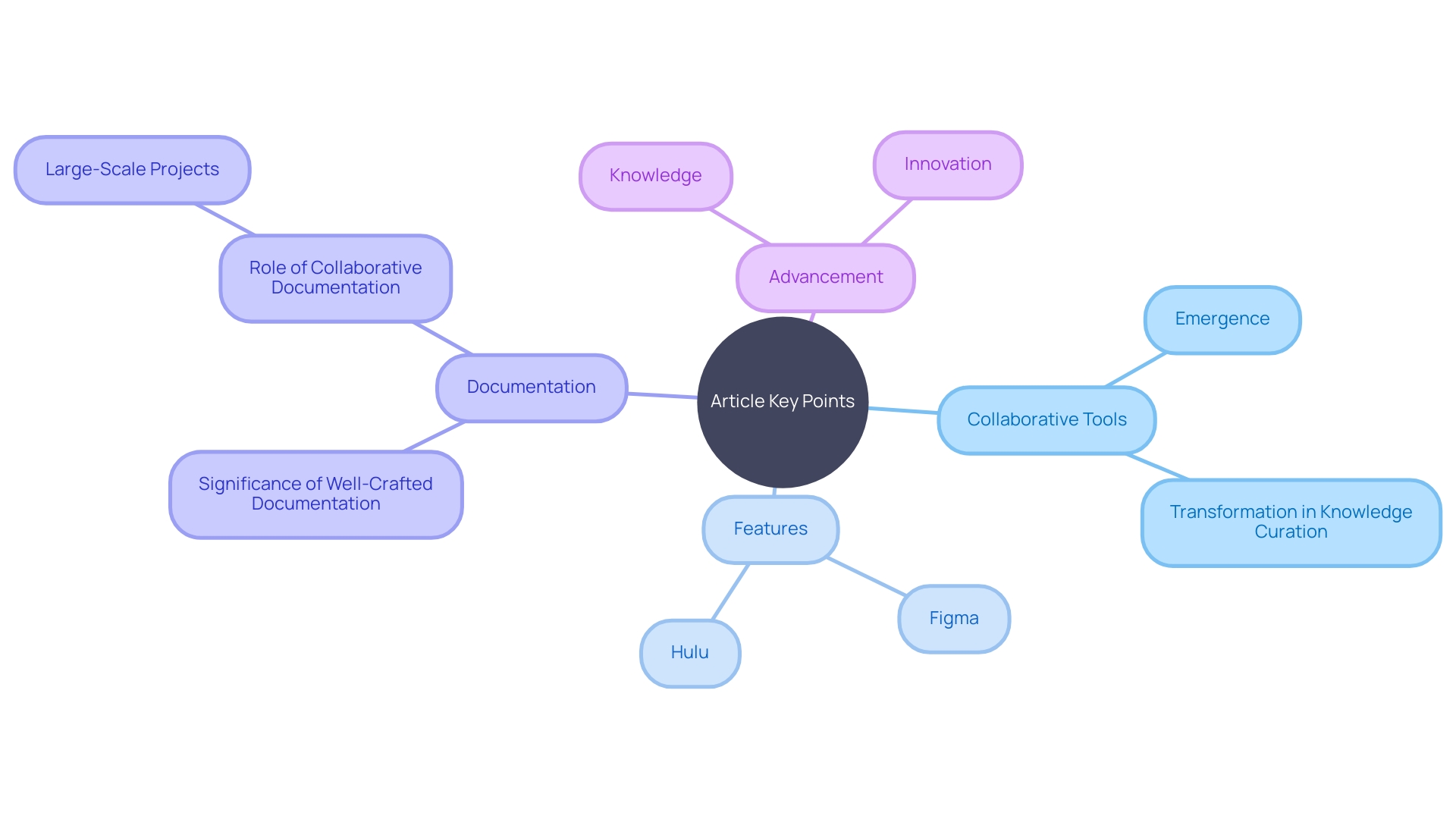
Legal and Compliance Considerations
Navigating the intricacies of regulatory compliance and data privacy is paramount in the realm of collaborative documentation. Regulatory compliance involves adhering to specific laws and rules applicable to various industries and jurisdictions. With the evolving global focus on data privacy, epitomized by Europe's GDPR, and the increased scrutiny on technology companies, understanding and protecting sensitive data have never been more critical.
To safeguard data effectively, it's crucial to know its location and the nature of the information it contains, such as whether it constitutes sensitive or confidential material. This necessitates the use of data discovery and classification technologies. Moreover, it's essential to be aware of who has access to the data and to manage document sharing meticulously.
Ensuring the integrity and authenticity of records over time, along with establishing protocols for their disposal, forms the backbone of compliance.
With the advent of AI integration into writing and research tools, ethical considerations arise, especially concerning transparency and disclosure. The academic community grapples with these challenges, as outlined by a task force offering guidelines for Ai's ethical use in scholarship and creativity. These efforts, while in their preliminary stages, signal a broader commitment to upholding research integrity and adhering to established principles such as honesty, accountability, and professional courtesy.
As data leaders continue to express concerns over maintaining consistent data security and navigating the complexities of compliance, the integration and cooperation among security controls become pivotal. The emergence of generative AI and GPT technologies has further complicated the landscape, underscoring the importance of robust data governance and privacy regulations. Ultimately, achieving compliance is not merely about avoiding legal repercussions; it's about fostering a culture of integrity and ethical conduct in collaborative documentation efforts.
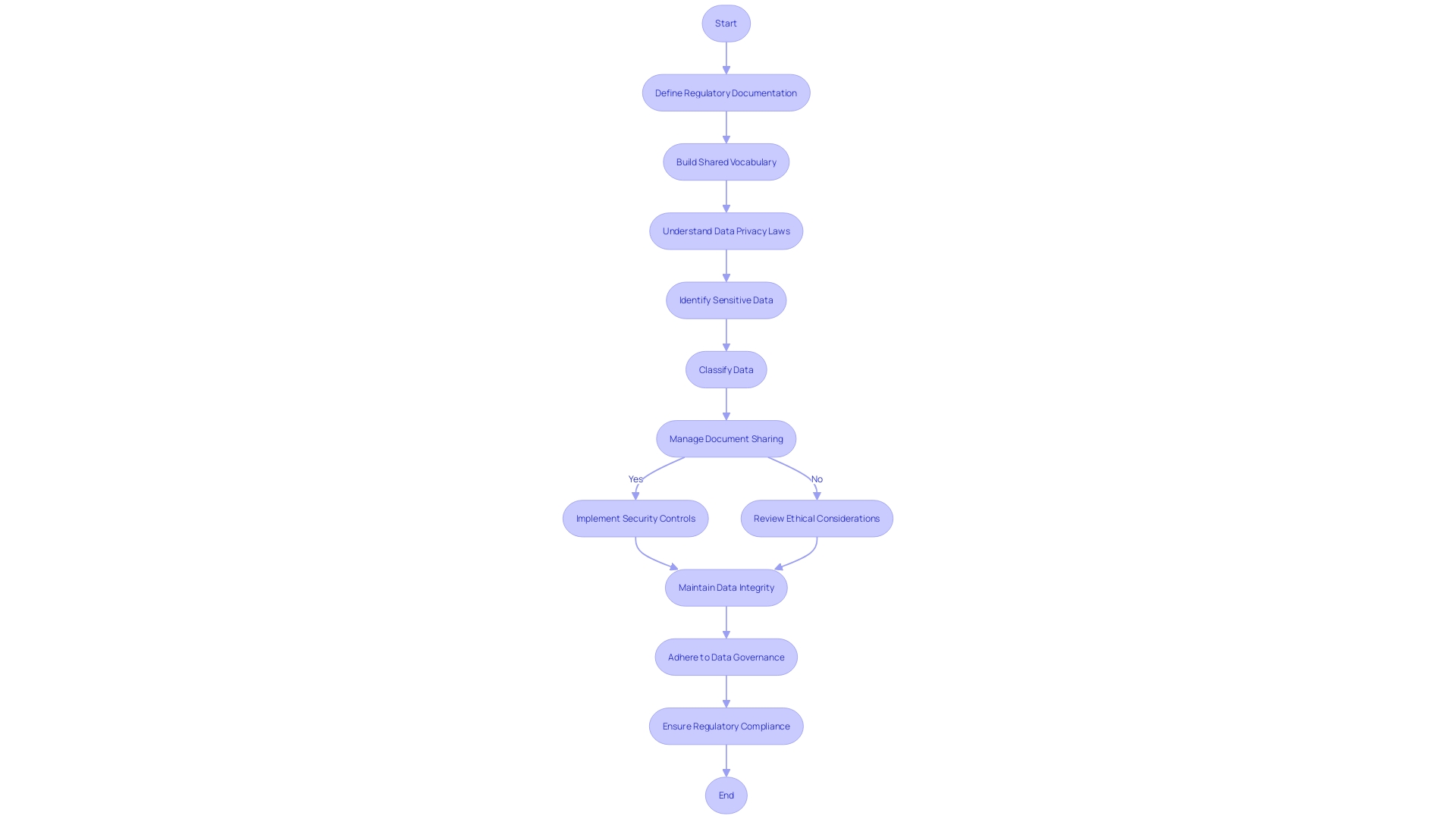
Client Engagement and Involvement
Ensuring that technical documentation resonates with client needs is paramount for their engagement and satisfaction. To achieve this, incorporating client feedback into the documentation process is as essential as the content itself. As exemplified by Nets, a leader in digital payment solutions, the challenge lies in presenting technical data in a manner that is comprehensible and engaging.
They realized that by reimagining complex tables and schemes into more interactive formats, they could empower users to explore the data independently.
Similarly, instructional designers like Karmela PeÄek emphasize the necessity of transforming mundane information into captivating content to hold the user's interest, particularly in areas requiring compliance with stringent regulations like fraud protection.
Moreover, statistics show that one in five U.S. adults read at or below the fifth-grade level, highlighting the importance of using plain language in documentation for broader accessibility, according to Iris Amelia O'Connor of Emerson College. This approach not only meets technical requirements but also ensures that the content is universally comprehensible.
The coproduction of research, as noted by experts, further illuminates the value of stakeholder involvement, from initial design to the implementation of results. Such partnerships enhance the documentation's relevance and increase the likelihood of its practical application. By recognizing the 'invisible' labor that goes into creating and maintaining documentation, as indicated by museum collections data management practices, organizations can better appreciate the intricacies involved in producing high-quality technical documentation.
In conclusion, actively involving clients through collaborative strategies ensures that the final documentation not only meets but exceeds their expectations, fostering greater satisfaction and compliance with the necessary directives.
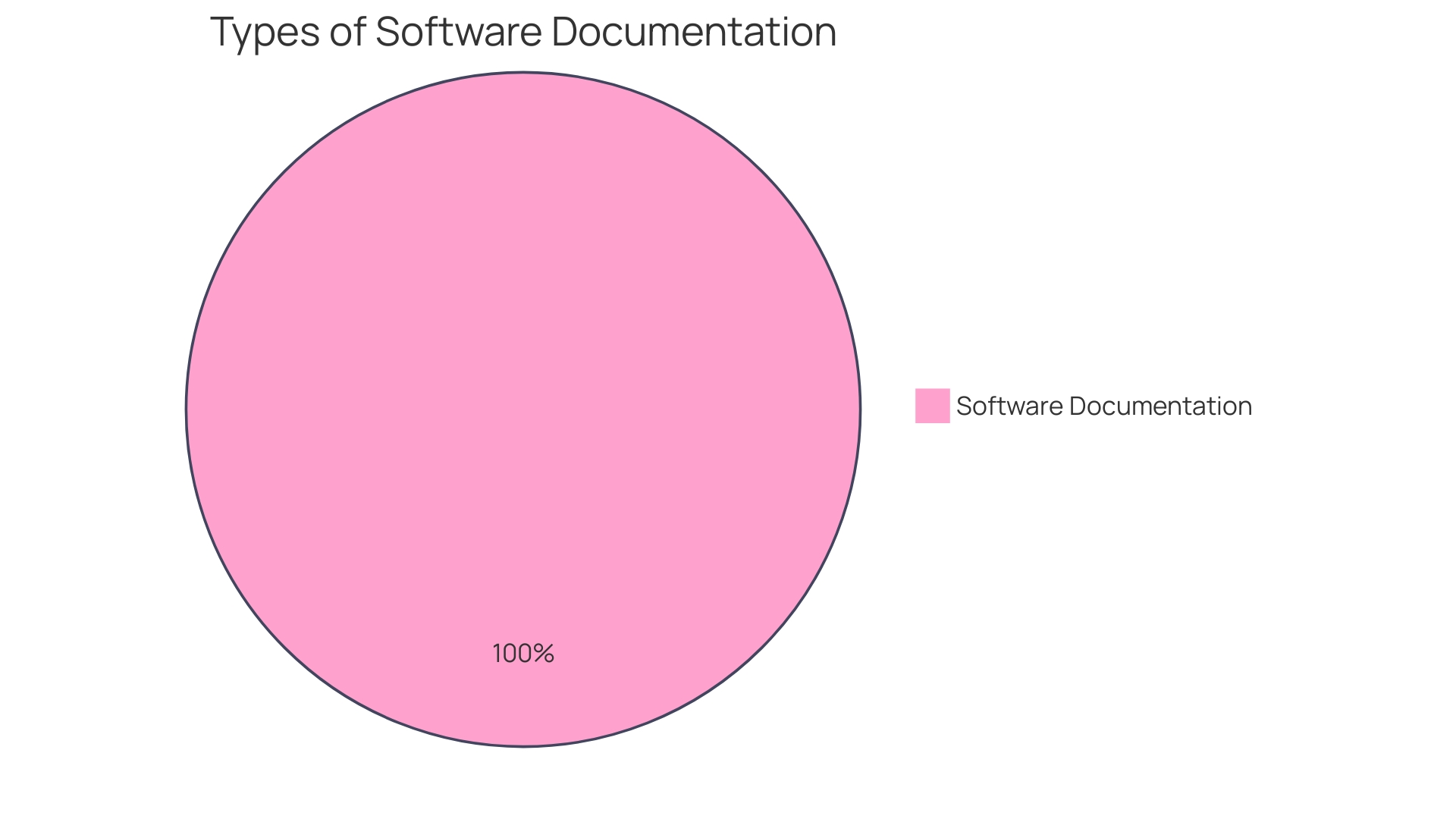
Challenges and Solutions in Collaborative Documentation
As the need for comprehensive and organized technical documentation intensifies in the software development landscape, collaborative documentation has emerged as a pivotal practice. It enables multiple stakeholders, including end-users, administrators, and developers, to access critical information about a product's design, architecture, and functionality. While this collaborative approach has revolutionized how information is shared and utilized, it does come with its own set of hurdles.
These challenges range from synchronizing team member contributions to upholding the uniformity of documents and navigating through inevitable conflicts.
To address these issues, it's essential to embrace practical solutions and strategies that foster effective collaboration. Drawing on the concept of 'collective writing' can be a game-changer, where multiple authors simultaneously contribute and refine content on a shared platform. This method not only captures diverse insights but also accelerates the documentation process.
Implementing structured communication is another strategic move that ensures discussions remain focused and productive, allowing teams to tackle both instructional and logistical problems efficiently.
Moreover, the embrace of team science in research underscores the importance of collaborative efforts. Statistics reveal that addressing today's complex scientific and societal challenges necessitates teamwork across various boundaries. The success of such collaborations hinges on the ability to integrate knowledge from diverse perspectives, highlighting the power of teamwork in producing robust and multidimensional solutions.
In light of these insights, the Ford Foundation's experience with transitioning from a single content producer to a more dynamic content creation process exemplifies the necessity of adapting to increased demands. Similarly, initiatives like the Open Documentation Academy and Canonical's efforts to foster open-source contribution signify the ongoing evolution towards inclusive and participatory documentation practices.
The collective wisdom gleaned from these diverse cases and insights points towards a future where collaborative documentation is not only beneficial but integral to the success of complex, multifaceted projects. By adopting these strategies, organizations can navigate the challenges of collaborative documentation and ensure their processes are as seamless and effective as possible.
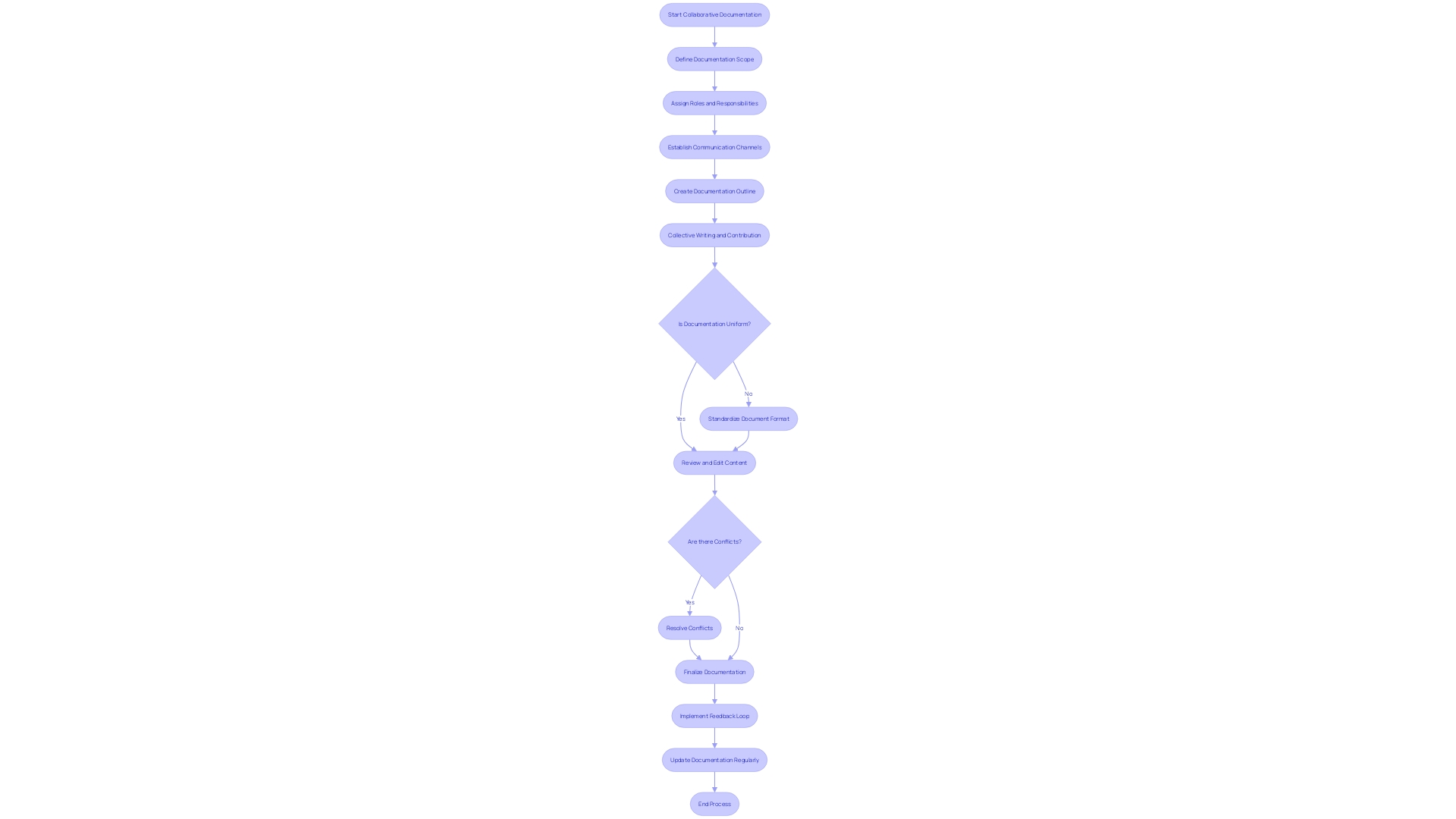
Conclusion
Collaborative documentation is a powerful tool in software development, enhancing quality and promoting efficiency among team members. Choosing the right collaboration tool and setting a strong foundation for collaboration are crucial. Best practices include cultivating a documentation-friendly culture, prioritizing accessibility, and using tools like Figma and Huly.
Legal and compliance considerations are important, as is client engagement and involvement. Challenges can be addressed through practical solutions like collective writing and structured communication. In conclusion, collaborative documentation maximizes efficiency, fosters teamwork, and ensures a clear understanding of software.
It is an investment in project success, benefiting knowledge and innovation. Organizations can optimize workflows and achieve collective success by embracing collaborative documentation.
Start collaborating today and experience the benefits of efficient and clear documentation!
Frequently Asked Questions
What is collaborative documentation?
Collaborative documentation is a dynamic process that involves various experts working together to create comprehensive, precise, and current documents that accurately reflect a product's design and functionality.
Why is collaborative documentation important?
It enhances the quality of documentation, promotes efficiency, instills a sense of collective ownership among team members, and serves as the foundation for any development project.
How did the Ford Foundation benefit from collaborative documentation?
The Ford Foundation modernized its content production workflow with a new content management system, allowing for more frequent and varied content contributions, thus keeping up-to-date with evolving audience needs.
What are the benefits of collaborative documentation in healthcare?
A study featured in Texas McCombs showed that collaborative care in hospitals reduced patient stays and enhanced outcomes due to the collective expertise of the healthcare team.
What should be considered when choosing a documentation collaboration tool?
The tool should be user-friendly, integrate with existing platforms, support cooperative editing, version tracking, comprehensive document management, and meet accessibility standards outlined by WCAG.
How can clear roles and responsibilities enhance collaborative documentation efforts?
Defining clear roles and responsibilities using frameworks like the Credit taxonomy helps recognize individual contributions accurately and ensures all parties are aligned with shared goals and expectations.
What was the impact of implementing Collaborative Care in mental health treatment at UW Health?
UW Health embedded behavioral health specialists within primary care clinics, which led to an immediate response to mental health concerns, a significant reduction in the time for patient improvement, and a more holistic healthcare environment.
What are the best practices for effective collaborative documentation?
The best practices include establishing clear documentation, maintaining it with a culture that values documentation, ensuring accessibility and inclusivity, and adapting documentation to meet the evolving needs of stakeholders.
How do collaborative documentation tools revolutionize technical projects?
Collaborative tools enhance how teams interact with and manage information by enabling real-time collaboration, centralized feedback systems, and dynamic document management.
What are the legal and compliance considerations in collaborative documentation?
Regulatory compliance involves adhering to laws and rules, protecting sensitive data, ensuring data integrity and authenticity, managing document sharing, and integrating AI ethically.
How does client engagement and involvement improve technical documentation?
Incorporating client feedback and making technical data comprehensible and engaging ensures that documentation meets client needs and facilitates greater satisfaction and compliance.
What challenges come with collaborative documentation, and how can they be solved?
Challenges include synchronizing team contributions and upholding document uniformity. Solutions involve collective writing, structured communication, and embracing team science to integrate knowledge from diverse perspectives effectively.




